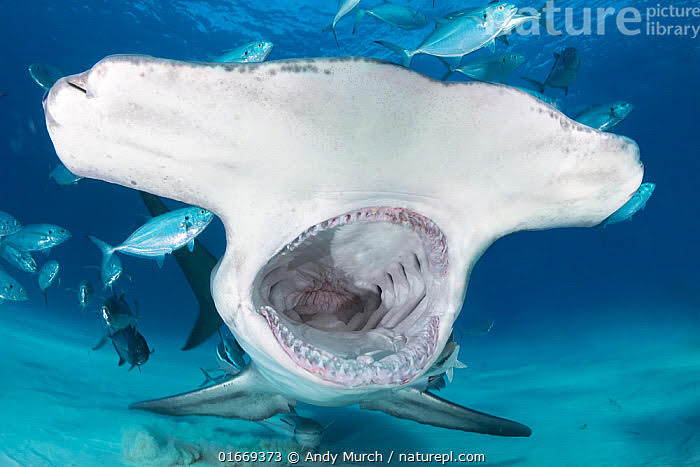The Hydrodynamic Head of Hammerhead Sharks

When interning on a whale watching boat, of course the main goal is to find and spot some whales and dolphins. For me, I was always secretly hoping that on our outing we would come across my favorite marine animal, sharks. My wish came true and my favorite day on the boat turned out to be when we spotted my favorite shark, the hammerhead, which is in the Family Sphyrnidae. Hammerhead sharks have always fascinated me because of their unique head shape. Many people may not know this, but their head isn’t just for looks, it actually plays a huge role in the way these sharks are able to hunt and use their senses.
Figure: Juvenile Hammerhead shark in Cape May, New Jersey. Image: Jessica Heitmann
There are many theories and studies as to how the hammerhead’s head helps them hunt and survive. The structure has “winglike” projections on either side with eyes on either end and their unique head shape has been termed “cephalofoil” (Symes 2022). Many studies have been done to suggest that the wide spacing of their eyes might give them enhanced binocular visions and that the larger nostril tracts at the base of the head can track odors given off by possible prey. All sharks also have electromagnetic field receptors known as Ampullae of Lorenzini which helps to detect electric fields given off by objects or prey species in the ocean to help orient the shark and allow them to use their senses. In hammerhead sharks, the Ampullae of Lorenzini is spread out on a larger surface area which helps to maximize their ability to use these receptors and enhance their hunting capability.
Multiple studies have been done to try and understand the hydrodynamic functions of the hammerhead shark cephalofoil. Past theories and research suggested that the head acts like a wing and helps them make sharp, fast turns, however, recent studies have shown that those turns can be attributed to the vertebrae of these sharks. Recent studies do suggest that the cephalofoil has other hydrodynamic qualities. In the head region of hammerhead sharks, they have well developed epaxial and hypaxial musculature whereas other sharks have smaller muscles in their head. The musculature in the hammerhead head completely surrounds the ventral column in there head region and in other sharks this type of muscle is only located on the lateral sides (Nakaya 1995). This stronger and larger musculature helps the hammerhead to not only elevate their head, but depress it as well, which isn’t common in most sharks. This suggests that the musculature in their unique head structure does in fact add hydrodynamic benefits of maneuverability and flexibility.
In conclusion, hammerhead sharks are not just fascinating to look at, but fascinating to learn about. Their unique head and body structure explain so much about how these sharks function and how they are able to be successful predators of the sea. Their importance to the ocean ecosystems is important to recognize and very interesting to learn about! I hope to see some more hammerhead sharks in Cape May!
-Jessica Heitmann, Intern at Cape May Whale Watch and Research Center
Stockton University ’22
References
Gaylord, M.K., Blades, E.L. & Parsons, G.R. A hydrodynamics assessment of the hammerhead shark cephalofoil. Sci Rep 10, 14495 (2020). https://doi.org/10.1038/s41598-020-71472-2
Nakaya, K. (1995). Hydrodynamic Function of the Head in the Hammerhead Sharks (Elasmobranchii: Sphyrnidae). Copeia, 1995(2), 330–336. https://doi.org/10.2307/1446895
Symes, P., 2022. Why is the hammerhead shark’s head shaped like that?. [online] X-Ray International Dive Magazine. Available at: <https://xray-mag.com/content/why-hammerhead-sharks-head-shaped> [Accessed 17 July 2022].
